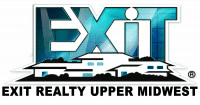Not sure if AR Homes is right for you?
Talk to a Franchise Advisor who can match you with your perfect franchise based on your goals, experience, and investment range.
Talk to an Expert
AR Homes
How much does AR Homes cost?
Initial Investment Range
$535,000 to $2,190,000
Franchise Fee
$65,000
The franchise is for the operation of a residential homebuilding business of both single family and multi-family homes.
Enjoy our partial free risk analysis below
Unlock the full risk analysis to access 9 more categories covering 100+ risks.
AR Homes May 1, 2025 FDD Risk Analysis
Free FDD Library AI Analysis Date: August 19, 2025
DISCLAIMER: Not Legal Advice - For Informational Purposes Only. Consult With Qualified Franchise Professionals.
Franchisor Stability Risks
Start HereDisclosure of Franchisor's Financial Instability
Medium Risk
Explanation
AR Franchising, Inc.'s (ARF) audited financials show a significant decline in performance. From 2023 to 2024, total revenues dropped from $34.8M to $25.3M, and net income fell from $12.0M to $5.8M. While the company remains profitable and has reduced debt, this sharp decrease in top and bottom-line results could indicate market challenges or operational issues that may affect its ability to support franchisees and grow the brand effectively.
Potential Mitigations
- A franchise accountant should analyze the three-year financial trends, including the reasons for the significant revenue and income decline in the most recent year.
- In discussions with the franchisor, inquire about the causes of the 2024 performance drop and their strategies for future stability and growth.
- Your business advisor can help you assess whether the franchisor's current financial state can adequately support the system and its obligations to you.
High Franchisee Turnover
High Risk
Explanation
The franchise system shows signs of instability and potential franchisee distress. In 2023, the system experienced a net loss of four units, with five franchisees terminating their agreements against only one new opening. This represents a high termination rate of nearly 11% of the starting base of 46 units. Such a high rate of turnover can be a significant indicator of potential systemic issues, such as franchisee unprofitability, dissatisfaction, or other challenges within the business model.
Potential Mitigations
- It is critical to contact a significant number of former franchisees listed in Item 20 to understand their reasons for leaving the system.
- Your franchise attorney can help you frame questions for the franchisor regarding the high number of terminations in 2023.
- With your accountant, analyze the Item 20 data over the full three-year period to assess the overall trend in system stability.
Rapid System Growth
Low Risk
Explanation
This specific risk was not identified in the FDD Package. The franchise system is not experiencing rapid growth; in fact, it has been stagnant or shrinking over the last two years. However, if a franchisor expands too quickly, its support systems for training, site selection, and operations can become strained, potentially leaving you without adequate assistance.
Potential Mitigations
- When evaluating any franchise, it's wise for your accountant to compare the rate of unit growth in Item 20 with the franchisor's financial resources in Item 21.
- A discussion with your business advisor about the franchisor's infrastructure for supporting its franchisees is a valuable part of due diligence.
- Legal counsel can help you understand the franchisor's contractual support obligations outlined in Item 11.
New/Unproven Franchise System
Low Risk
Explanation
This risk was not identified. ARF has been offering franchises since 1991 and has an established system with a long operational history. An unproven system is a significant risk because the business model may not be viable, brand recognition is minimal, and the franchisor may lack the experience to provide effective support, increasing the chances of failure.
Potential Mitigations
- When considering a newer franchise, a business advisor can help you scrutinize the prior industry and franchising experience of the management team in Item 2.
- It's important to have an accountant review the financial statements of a young franchisor to assess its capitalization and financial stability.
- Your attorney should advise on negotiating more favorable terms to offset the higher risk of an unproven system.
Possible Fad Business
Low Risk
Explanation
This specific risk was not identified in the FDD Package. The AR Homes® brand operates in the residential home construction industry, which is a long-established sector. A business based on a fad carries the risk that consumer interest may disappear, leaving you with a worthless business but still bound by a long-term franchise agreement and its financial obligations.
Potential Mitigations
- For any franchise concept, your business advisor can help you research the long-term consumer demand and market trends for its products or services.
- It's prudent to have your accountant model the financial viability of the business under various market conditions, not just during peak trends.
- Legal counsel can review the franchise agreement term to ensure you understand your long-term commitment.
Inexperienced Management
Low Risk
Explanation
This risk was not identified. Item 2 indicates that the franchisor's management team has extensive experience in the home building industry and with the franchise system itself. Inexperienced management can be a major risk, as they may lack the knowledge to provide effective support, training, and strategic direction, potentially harming the entire system.
Potential Mitigations
- A thorough review of the executive biographies in Item 2 with a business advisor is a crucial step in evaluating any franchise opportunity.
- Contacting current franchisees to inquire about their direct experiences with the management team's competence and support is a valuable due diligence step.
- An accountant can help assess if the company's financial performance aligns with the purported experience of its leadership team.
Private Equity Ownership
Medium Risk
Explanation
The franchisor is partially owned by an Employee Stock Ownership Plan (ESOP), which can function similarly to private equity by focusing on financial returns. The parent company, AR Family Holdings, LLC, could sell its interest. The risk is that leadership may prioritize financial engineering or a profitable exit over the long-term health of franchisees. This could manifest as reduced support, increased fees, or a sale to a new owner with a less favorable operating philosophy.
Potential Mitigations
- Your attorney should analyze the ownership structure disclosed in Item 1 and explain the potential effects of a future sale of the company.
- Discuss with a business advisor the typical investment horizons and strategies of entities like ESOPs or family holding companies.
- Inquire with current franchisees about any changes in system philosophy or support levels since the ESOP was established.
Non-Disclosure of Parent Company
Low Risk
Explanation
This risk was not identified. The FDD properly discloses the parent company, AR Family Holdings, LLC, in Item 1. When a franchisor is a subsidiary, failing to disclose the parent or provide its financial statements (if it guarantees the franchisor's obligations) can hide significant risks. Without this information, you cannot fully assess the financial strength and stability backing the franchise system.
Potential Mitigations
- Your attorney should always verify that the franchisor has fully disclosed its parent companies and affiliates as required in Item 1.
- An accountant should confirm if the parent's financial statements are required and, if so, review them for signs of financial weakness or instability.
- A business advisor can help investigate the reputation and track record of any parent company involved in a franchise system.
Predecessor History Issues
Low Risk
Explanation
This risk was not identified in the FDD Package. ARF states in Item 1 that it has no predecessors. A franchisor with a history of predecessors could be hiding past issues, such as high failure rates or litigation under a previous name. Understanding the full history of the system is vital to assessing its stability and the franchisor's track record.
Potential Mitigations
- It is important for your attorney to review Item 1 for any disclosed predecessors and investigate their history.
- A business advisor can help you research public records and news archives for information on any predecessor companies.
- Speaking with long-tenured franchisees can often reveal valuable insights into the system's history under previous ownership.
Pattern of Litigation
Medium Risk
Explanation
Item 3 discloses one pending lawsuit against ARF brought by a home buyer, alleging fraudulent and negligent misrepresentation by a former franchisee and seeking damages of at least $250,000. While not a large number of cases, the nature of the allegations is serious. A pattern of litigation involving claims of fraud or broken promises against the franchisor can signal systemic problems in its sales process, franchisee relations, or the viability of the business model itself.
Potential Mitigations
- Having your attorney thoroughly review the details of the pending litigation in Item 3 is a critical step.
- You should ask the franchisor for an update on the status and potential outcome of the pending case.
- Discussing the matter with current franchisees may provide additional context and insight into the franchisor's relationship with its network.
Disclosure & Representation Risks
Example Risk: Franchisee Financial Obligations
Blue Risk
Explanation
This risk involves the financial obligations that a franchisee must meet, including initial fees, ongoing royalties, and other required payments. Understanding these obligations is crucial for long-term success.
Potential Mitigations
- Carefully review the Franchise Disclosure Document (FDD) and consult with a franchise attorney to fully understand all financial commitments before signing.
- Conduct regular risk assessments
- Implement monitoring and reporting systems
Unlock Full Risk Analysis
Purchase the complete risk review to see all 102 risks across all 10 categories.
Financial & Fee Risks
Example Risk: Franchisee Financial Obligations
Blue Risk
Explanation
This risk involves the financial obligations that a franchisee must meet, including initial fees, ongoing royalties, and other required payments. Understanding these obligations is crucial for long-term success.
Potential Mitigations
- Carefully review the Franchise Disclosure Document (FDD) and consult with a franchise attorney to fully understand all financial commitments before signing.
- Conduct regular risk assessments
- Implement monitoring and reporting systems
Unlock Full Risk Analysis
Purchase the complete risk review to see all 102 risks across all 10 categories.
Legal & Contract Risks
Example Risk: Franchisee Financial Obligations
Blue Risk
Explanation
This risk involves the financial obligations that a franchisee must meet, including initial fees, ongoing royalties, and other required payments. Understanding these obligations is crucial for long-term success.
Potential Mitigations
- Carefully review the Franchise Disclosure Document (FDD) and consult with a franchise attorney to fully understand all financial commitments before signing.
- Conduct regular risk assessments
- Implement monitoring and reporting systems
Unlock Full Risk Analysis
Purchase the complete risk review to see all 102 risks across all 10 categories.
Territory & Competition Risks
Example Risk: Franchisee Financial Obligations
Blue Risk
Explanation
This risk involves the financial obligations that a franchisee must meet, including initial fees, ongoing royalties, and other required payments. Understanding these obligations is crucial for long-term success.
Potential Mitigations
- Carefully review the Franchise Disclosure Document (FDD) and consult with a franchise attorney to fully understand all financial commitments before signing.
- Conduct regular risk assessments
- Implement monitoring and reporting systems
Unlock Full Risk Analysis
Purchase the complete risk review to see all 102 risks across all 10 categories.
Regulatory & Compliance Risks
Example Risk: Franchisee Financial Obligations
Blue Risk
Explanation
This risk involves the financial obligations that a franchisee must meet, including initial fees, ongoing royalties, and other required payments. Understanding these obligations is crucial for long-term success.
Potential Mitigations
- Carefully review the Franchise Disclosure Document (FDD) and consult with a franchise attorney to fully understand all financial commitments before signing.
- Conduct regular risk assessments
- Implement monitoring and reporting systems
Unlock Full Risk Analysis
Purchase the complete risk review to see all 102 risks across all 10 categories.
Franchisor Support Risks
Example Risk: Franchisee Financial Obligations
Blue Risk
Explanation
This risk involves the financial obligations that a franchisee must meet, including initial fees, ongoing royalties, and other required payments. Understanding these obligations is crucial for long-term success.
Potential Mitigations
- Carefully review the Franchise Disclosure Document (FDD) and consult with a franchise attorney to fully understand all financial commitments before signing.
- Conduct regular risk assessments
- Implement monitoring and reporting systems
Unlock Full Risk Analysis
Purchase the complete risk review to see all 102 risks across all 10 categories.
Operational Control Risks
Example Risk: Franchisee Financial Obligations
Blue Risk
Explanation
This risk involves the financial obligations that a franchisee must meet, including initial fees, ongoing royalties, and other required payments. Understanding these obligations is crucial for long-term success.
Potential Mitigations
- Carefully review the Franchise Disclosure Document (FDD) and consult with a franchise attorney to fully understand all financial commitments before signing.
- Conduct regular risk assessments
- Implement monitoring and reporting systems
Unlock Full Risk Analysis
Purchase the complete risk review to see all 102 risks across all 10 categories.
Term & Exit Risks
Example Risk: Franchisee Financial Obligations
Blue Risk
Explanation
This risk involves the financial obligations that a franchisee must meet, including initial fees, ongoing royalties, and other required payments. Understanding these obligations is crucial for long-term success.
Potential Mitigations
- Carefully review the Franchise Disclosure Document (FDD) and consult with a franchise attorney to fully understand all financial commitments before signing.
- Conduct regular risk assessments
- Implement monitoring and reporting systems
Unlock Full Risk Analysis
Purchase the complete risk review to see all 102 risks across all 10 categories.
Miscellaneous Risks
Example Risk: Franchisee Financial Obligations
Blue Risk
Explanation
This risk involves the financial obligations that a franchisee must meet, including initial fees, ongoing royalties, and other required payments. Understanding these obligations is crucial for long-term success.
Potential Mitigations
- Carefully review the Franchise Disclosure Document (FDD) and consult with a franchise attorney to fully understand all financial commitments before signing.
- Conduct regular risk assessments
- Implement monitoring and reporting systems
Unlock Full Risk Analysis
Purchase the complete risk review to see all 102 risks across all 10 categories.










